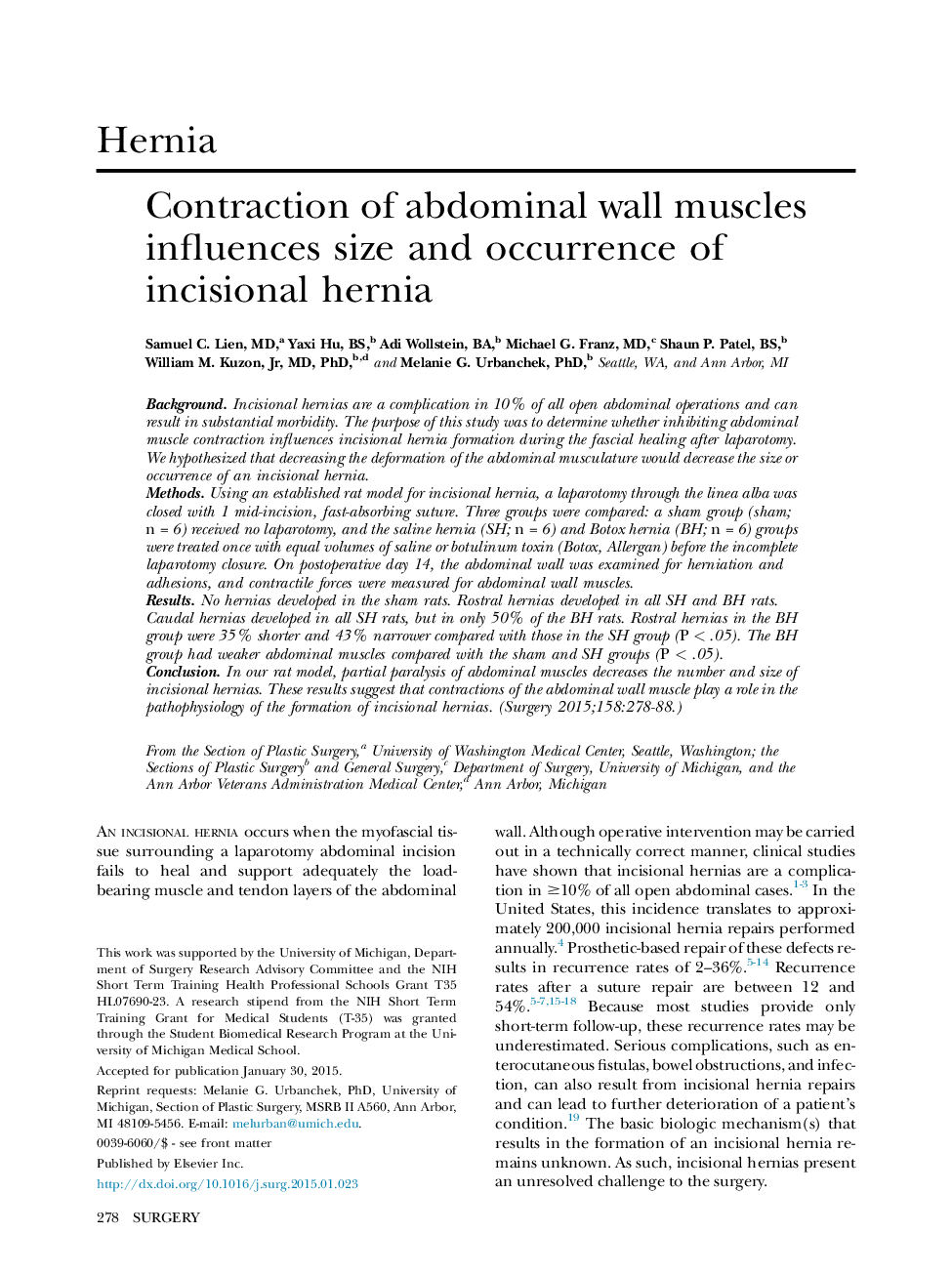| Article ID | Journal | Published Year | Pages | File Type |
|---|---|---|---|---|
| 6255350 | Surgery | 2015 | 11 Pages |
BackgroundIncisional hernias are a complication in 10% of all open abdominal operations and can result in substantial morbidity. The purpose of this study was to determine whether inhibiting abdominal muscle contraction influences incisional hernia formation during the fascial healing after laparotomy. We hypothesized that decreasing the deformation of the abdominal musculature would decrease the size or occurrence of an incisional hernia.MethodsUsing an established rat model for incisional hernia, a laparotomy through the linea alba was closed with 1 mid-incision, fast-absorbing suture. Three groups were compared: a sham group (sham; n = 6) received no laparotomy, and the saline hernia (SH; n = 6) and Botox hernia (BH; n = 6) groups were treated once with equal volumes of saline or botulinum toxin (Botox, Allergan) before the incomplete laparotomy closure. On postoperative day 14, the abdominal wall was examined for herniation and adhesions, and contractile forces were measured for abdominal wall muscles.ResultsNo hernias developed in the sham rats. Rostral hernias developed in all SH and BH rats. Caudal hernias developed in all SH rats, but in only 50% of the BH rats. Rostral hernias in the BH group were 35% shorter and 43% narrower compared with those in the SH group (P < .05). The BH group had weaker abdominal muscles compared with the sham and SH groups (P < .05).ConclusionIn our rat model, partial paralysis of abdominal muscles decreases the number and size of incisional hernias. These results suggest that contractions of the abdominal wall muscle play a role in the pathophysiology of the formation of incisional hernias.
